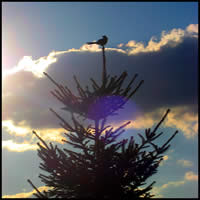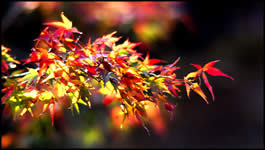Gary's Parries 17/12/06
 This week’s Gary’s Parries topics are:
This week’s Gary’s Parries topics are:
1. Why G7 Lacks Raw Support
2. New Techniques In Image Refocusing
Introducing this week’s Gary’s Parries column. Everything you always wanted to know about digital cameras, but were afraid to ask. No question too difficult, or too easy. As a Senior Principal Software Engineer, and a former Assistant Professor of Computer Information Systems, as well as a recording studio owner/operator, inventor, and now, a digital camera enthusiast, GARY has more digital camera knowledge in his entire brain than most people have in their little finger. In the unlikely event that GARY would not know the answer to your question, he will answer it anyway, true to the spirit of the word “Parries”, a fencing term which, in this context, implies “cleverly evasive answers”. So let your imagination run wild. Email all your nagging digital camera questions to: [email protected] , and then, En Garde!
You may also attach to your email an ORIGINAL PHOTO of your choosing. A preview of the photo will be displayed with your question, and a full-sized version will be just a click away. No personal information will be published with your question unless you specifically include it in the text or attached photo of your email, which may be further edited for grammar, content, or other reasons.
***
*** QUESTION 1—- WHY G7 LACKS RAW SUPPORT
***
I have read in the forums of PhotographyBLOG, and other websites, that the Canon PowerShot G7’s lack of Raw support was purely a marketing decision by Canon, designed to prevent the G7 from impacting Canon’s DSLR sales, which were obviously more important to them.
I have also read, in a recent statement from Canon’s Director of Media and Customer Relations, Chuck Westfall, that Canon omitted Raw support from their G7 because the G7 does not have the same high image quality as previous G-series cameras, and therefore Raw mode would offer “no discernible improvement in image quality” compared to JPEG SuperFine.
Now I don’t know what to believe. The predominant theory on the forums remains that it was a total marketing ploy by Canon. But why then would Canon release a statement admitting to the fact that the G7 has inferior image quality to its predecessors?
Thank you in advance for your response.
Sincerely,
Jack
***
*** ANSWER 1
***
Jack, one thing is for sure, there has been much dissatisfaction (to put it mildly) with Canon’s decision to omit Raw support from their G7. But you know, Jack, there had to have been a lot more dissatisfaction just a few months earlier, when Canon announced at PMA 2006 the total DISCONTINUATION of the G-series.
Looking back on that PMA announcement, we now know that it was nothing more than a deceptive marketing ploy. Canon knew all along they would be releasing the G7. They also knew it would lack the traditional G-series features of Raw support, a flip-out and twist LCD, and a high-speed lens, and they must have known that these omissions would disgruntle current G-series owners looking to upgrade. So they were hoping that the reversal of the G-series discontinuation would be enough to alleviate this discontent, but they were wrong. Their deception backfired.
As a result, Canon was left with an explosive situation, a rebellion against the G7, and more importantly, against Canon itself for putting their DSLR interests above the needs of G-series customers. Canon needed to do something quickly to save face, hence, the statement by Chuck Westfall, but no one bought it. Yet another deception that backfired.
And why wouldn’t it? Their contention that higher image noise would render Raw mode ineffective is simply not true. The biggest advantage of Raw is that it provides the option to defer irreversible image processing decisions until post-processing, and it does this regardless of a camera’s level of image noise. The addition of Raw to the G7 would have allowed for much more shooting flexibility than can be achieved with JPEG, where all such decisions must be locked in at the time of shooting.
If ineffectiveness were the reason Canon decided to omit Raw support from the G7, why then did they up the G7’s resolution another 3 megapixels over the G6? How ineffective is that? Why do they include a red-eye flash mode, when automatic red-eye removal is much more effective? Why do they even bother with ISO 1600? Raw mode would have been much more useful than any of these current G7 features.
So, Jack, getting back to your question, why would Canon release a statement pointing out the G7’s higher image noise, if not to offer the ‘real’ reason why the G7 lacks Raw support? The answer is quite simple. Sir Walter Scott said it best, “Oh what a tangled web we weave, when first we practice to deceive!” :)
***
*** QUESTION 2—- NEW TECHNIQUES IN IMAGE REFOCUSING
***
There was recently an excellent article in PhotographyBLOG, Refocusing Photographs After Taking the Image, which explains a new technique in image refocusing developed by Stanford graduate student, Ren Ng. It was an ‘excellent’ article, except for the fact that I totally did not understand it … but I want it. Gary, could you please shed some light on this new refocusing technique for me?
Thank you so much.
Jill
***
*** ANSWER 2
***
Jill, I must admit, the article was confusing to me, as well. The key to understanding this new refocusing technique is all in the understanding of ‘plenoptic’ cameras, which are ‘single-lens’ 3-D cameras, as compared to conventional 3-D cameras that utilize a pair of lenses separated horizontally by a few inches (much like a pair of eyes).
In plenoptic cameras, there is an array of, say, 90,000 microlenses placed directly in front of, say, a 16-megapixel CCD. Each of these 90,000 microlenses illuminates only a tiny section of the 16-megapixel CCD with the light from a correspondingly positioned tiny ‘spot’ on the object under view. This yields 90,000 sub-images consisting of 178 pixels each, where each pixel of a particular sub-image represents a slightly different angled view of its associated spot, and where correspondingly numbered pixels from different sub-images represent identically angled views of their associated spots. With this arrangement, it is possible to construct a complete image of the object under view from any one of 178 angles by selecting the identically numbered pixel from each of the 90,000 sub-images.
For example, if pixel #1 in each sub-image (i.e., spot on the object) corresponds to a view of that spot from the top-left, to construct a top-left view of the complete object, we would simply select pixel #1 from all 90,000 sub-images. Similarly, to construct a bottom-right view of the complete object, we would simply select pixel #178 from all 90,000 sub-images. To construct a straight-on view of the object, we would select pixel #89 from all 90,000 sub-images.
Notice that, while the CCD in the above example has a 16-megapixel resolution, all 178 views of the object will have an image resolution of only 90,000 pixels (i.e., the number of microlenses in the array). This severely reduced resolution is one of the drawbacks of using plenoptic cameras for 3-D imaging.
Now that we understand plenoptic cameras, it is a simple matter to visualize that Ren Ng has developed a mathematical formula for analyzing their 3-D image information, and for then extrapolating new focal points from that information, thereby refocusing the image. The proof of this is left as an exercise for the reader. :)
[Note: Much thanks to Nick in Japan for capturing these wonderful fall colors with his Canon EOS 20D. – Ed.]
***
[Column photo “The Photographer” by Brenda LaFleur of Brenda LaFleur Photography.]


